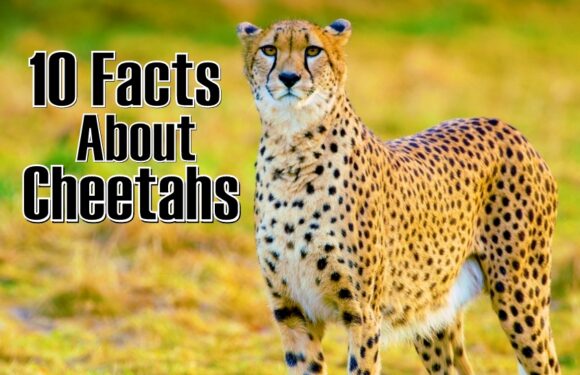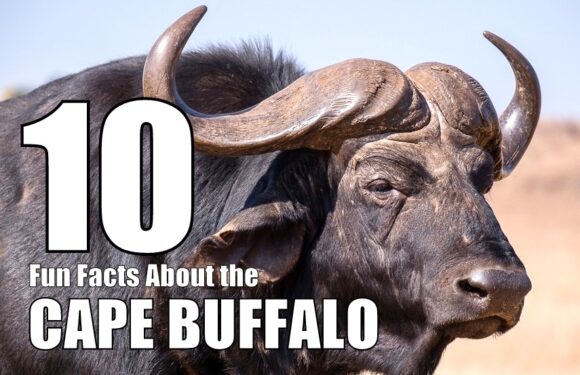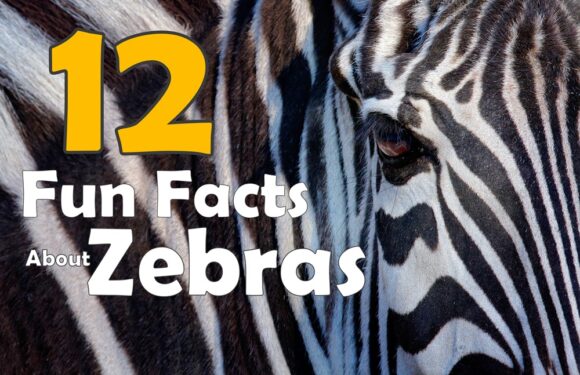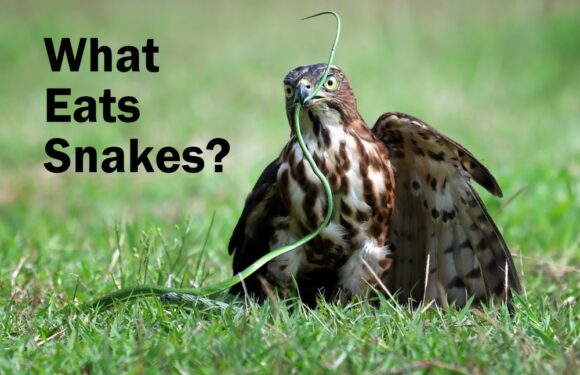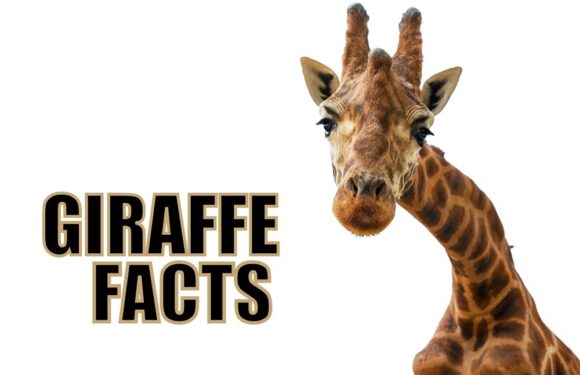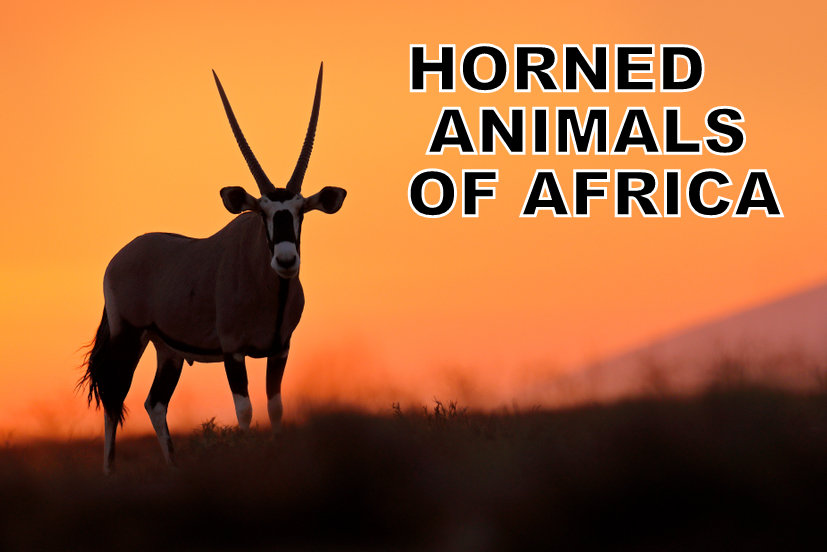
What Are Horns Made Out Of?
Horns are a prominent feature in many animal species.
Made of keratin, they are composed of the same protein that constitutes human hair and nails. This keratin forms around a bony core, originating from the skull of the animal. Unlike antlers, which are shed and regrown annually, horns are permanent structures. They continue to grow throughout the animal’s life, adding layers of keratin over the bony core. In some species, like the rhinoceros, the horn is purely keratin without a bony core.
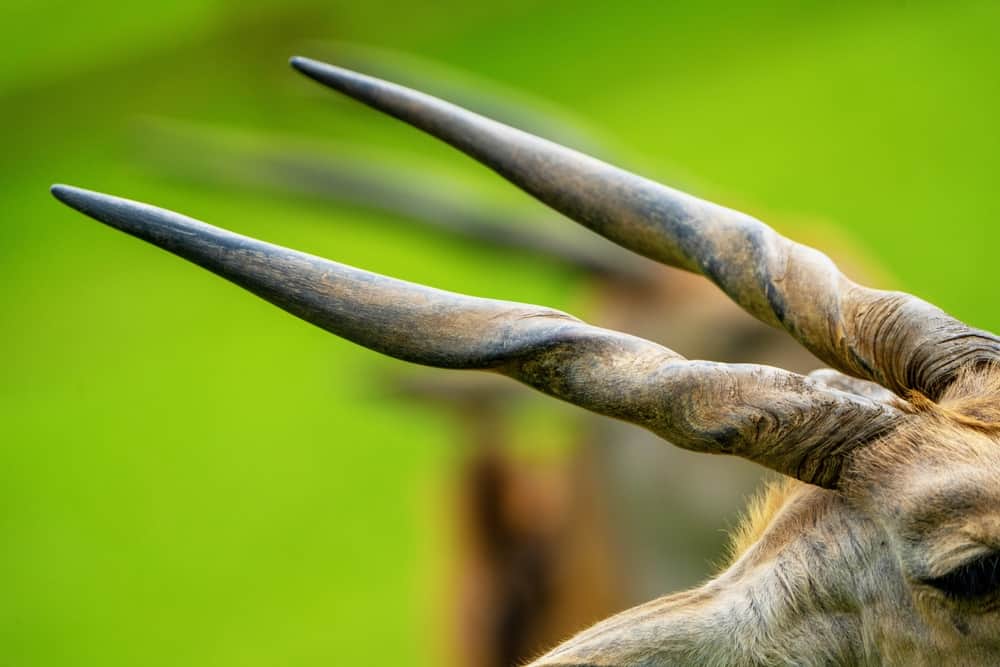
Horn production is a gradual, life-long process. It begins with the formation of a bony growth on the skull, which in most horned animals occurs shortly after birth. This bony core is vascularized, meaning it has blood vessels that nourish the growing structure. Keratin-producing cells at the base of the horn continuously deposit layers of this tough protein, resulting in the elongation and hardening of the horn.
What is the Purpose of Horns?
Horns play a variety of roles in the animal kingdom. Perhaps the most apparent function of horns is defense. Animals use their horns to fend off predators, delivering powerful blows to deter attacks.
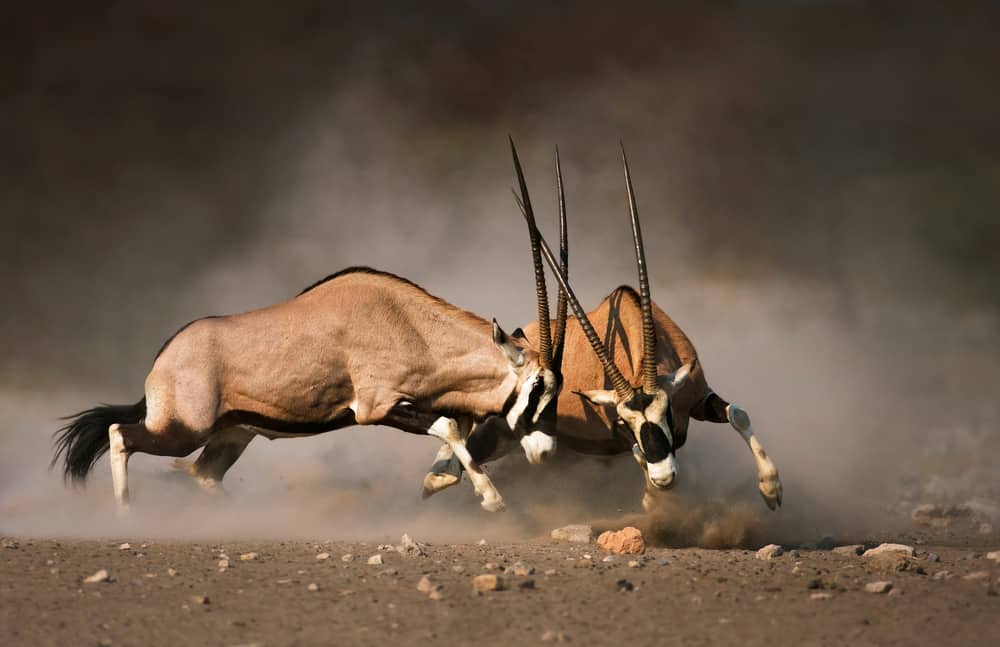
In many species, horns are used in displays of dominance and mating rituals. Males often use their horns to spar with rivals during mating season, with the victor winning the right to mate. They serve as tools for establishing and maintaining hierarchies within herds. They can also be a point of attraction for potential mates, with larger or more intricate horns often being more desirable.
In some species, horns assist in thermoregulation. The blood vessels in the bony core can help dissipate heat, regulating the animal’s body temperature.
Animals With Horns in Africa
African Buffalo
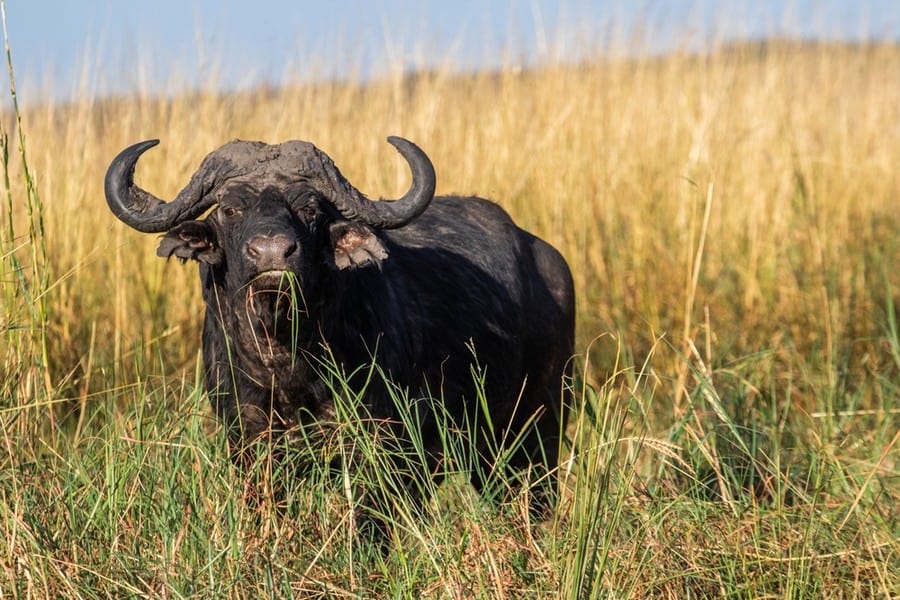
The African Buffalo is a revered member of Africa’s “Big Five.” Known for its intimidating presence, it sports robust, curved horns. These horns serve as weapons for defense against predators like lions and are also used in dominance battles within the herd. Interestingly, African Buffaloes display strong herd behavior and are known for their protective nature towards each other, often seen collectively fending off predators.
Rhinoceros
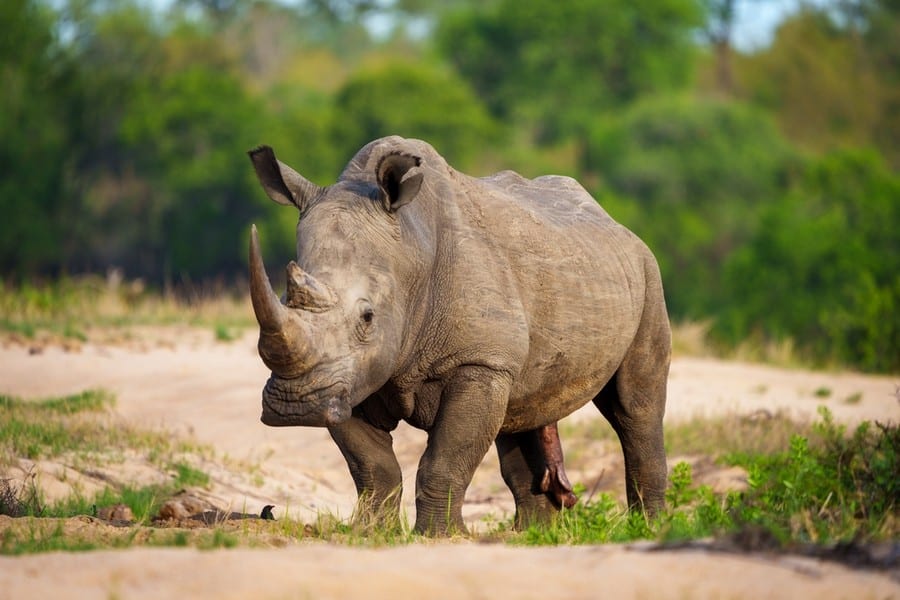
Both the black and white rhinoceroses are emblematic of African wildlife. Their horns have sadly made them targets for poaching. The black rhino, distinguishable by its pointed lip, is smaller yet more aggressive than the white rhino, which has a square lip.
Giraffe
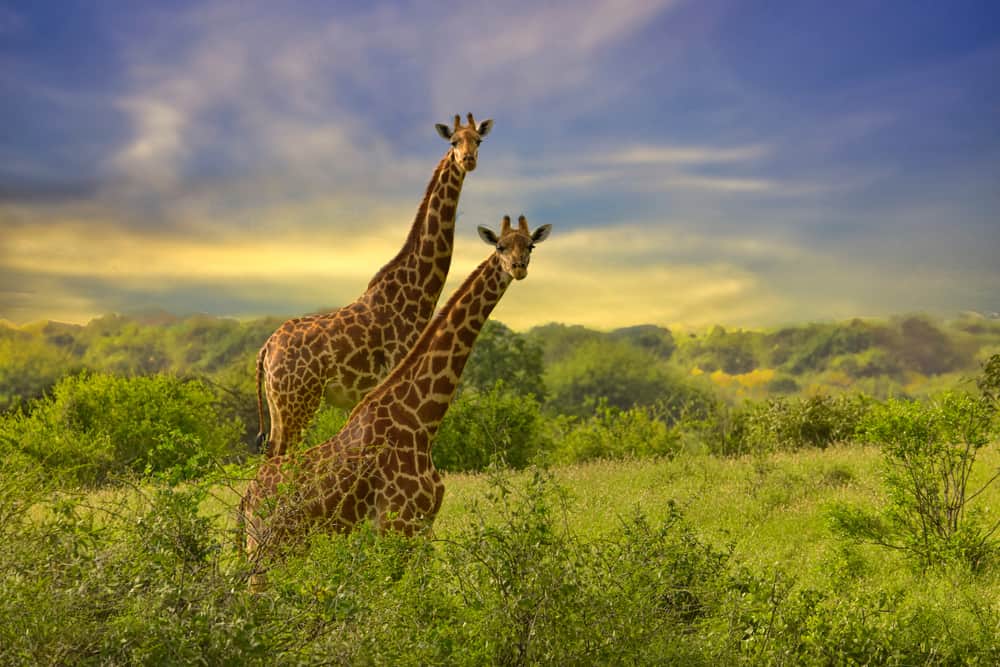
The Giraffe, instantly recognizable as the world’s tallest land animal, has horns known as ossicones. These horn-like protrusions are different from the horns found in other animals as they are covered in skin and fur. Giraffes’ ossicones fuse and harden as they mature, becoming a permanent part of their skull structure.
Saharan Horned Viper
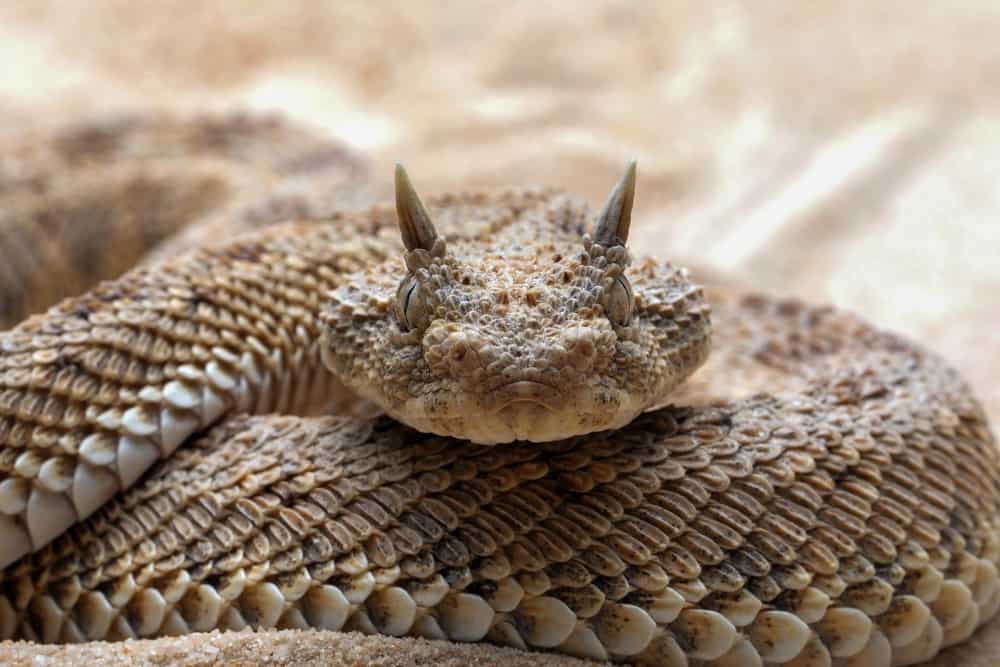
The Saharan Horned Viper is one of the most specialized reptiles inhabiting the North African desert landscape. The most prominent feature is its pair of horn-like scales above its eyes, giving it a menacing appearance. These horns may protect the venomous snake’s eyes from sand.
Eland
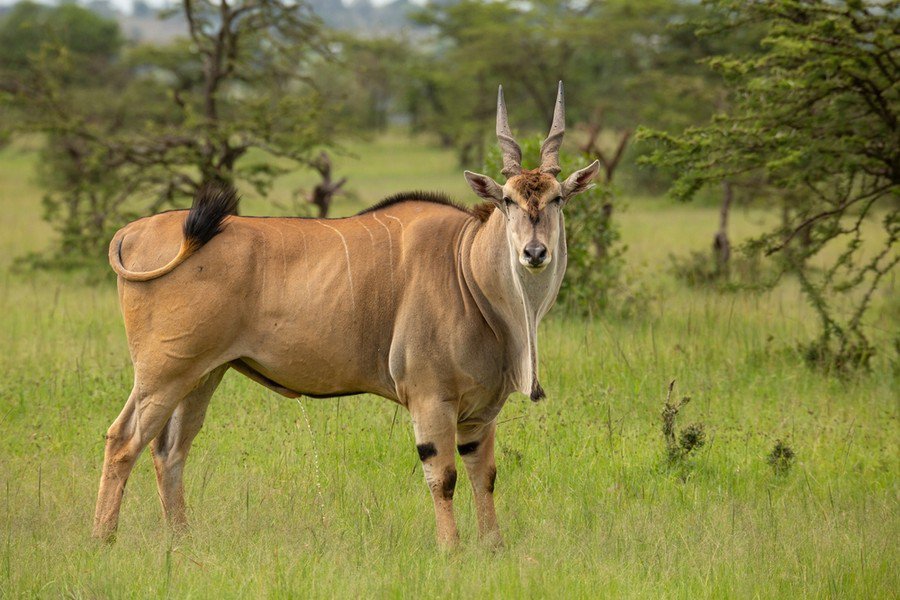
The Eland is the largest African antelope, known for its spiral and tightly curved horns. Despite their size, Elands are surprisingly agile and can clear obstacles with ease. They are also unique among antelopes for their ability to interbreed with other species.
Kudu
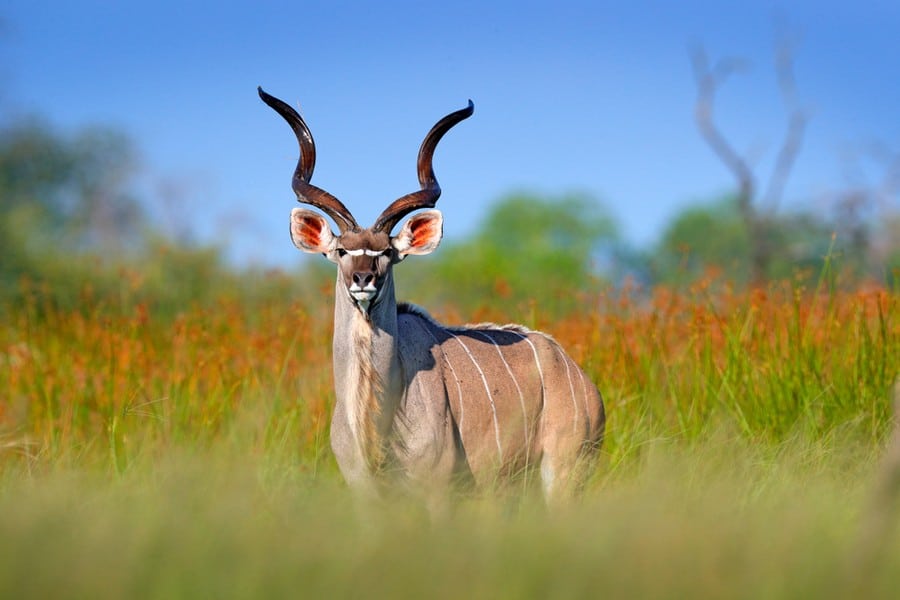
Kudus, both the Greater and Lesser varieties, are renowned for their spectacularly long and twisted horns, which in the Greater Kudu can spiral two and a half times. These antelopes are more commonly found in the woodlands and bushlands of Africa.
Impala
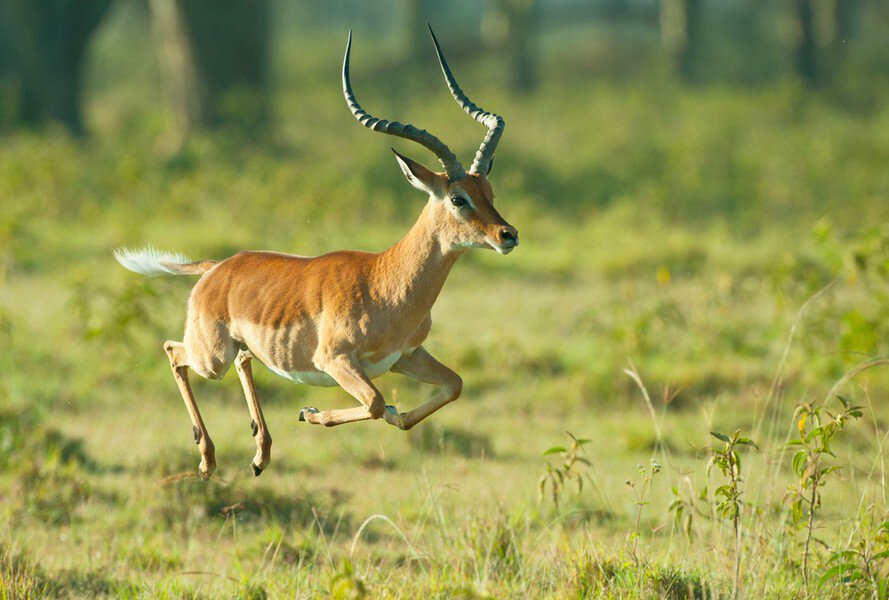
Impalas are agile and graceful, a common sight in the African savannah. Their lyre-shaped horns are used by males during mating contests to establish dominance and win over females. They are known for their impressive leaping ability, capable of jumping up to 30 feet (10 meters) in length and 10 feet (3 meters) in height.
Gemsbok
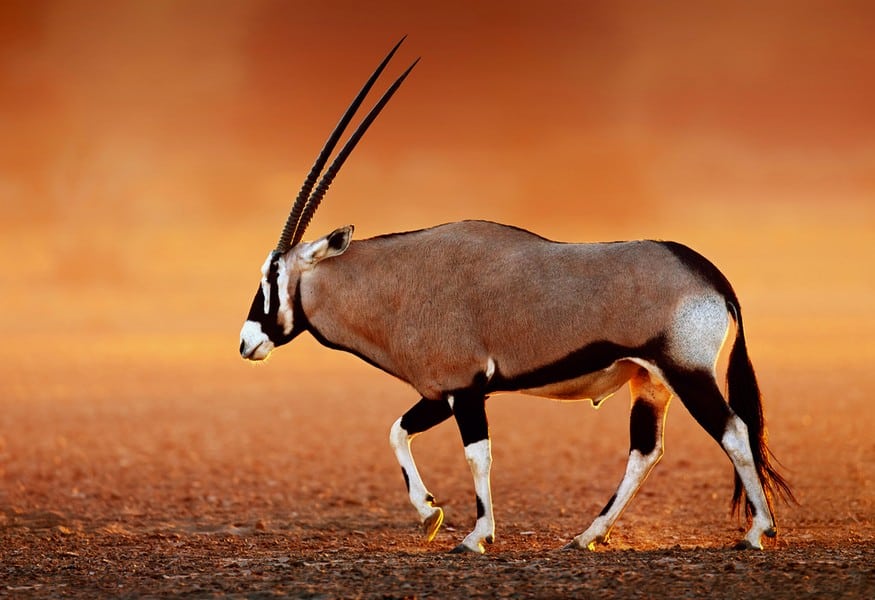
A member of the Oryx family, the Gemsbok is distinguished by its long, straight horns. These antelopes are adapted to living in harsh, arid environments and can survive long periods without water, getting moisture from the food they eat.
Wildebeest
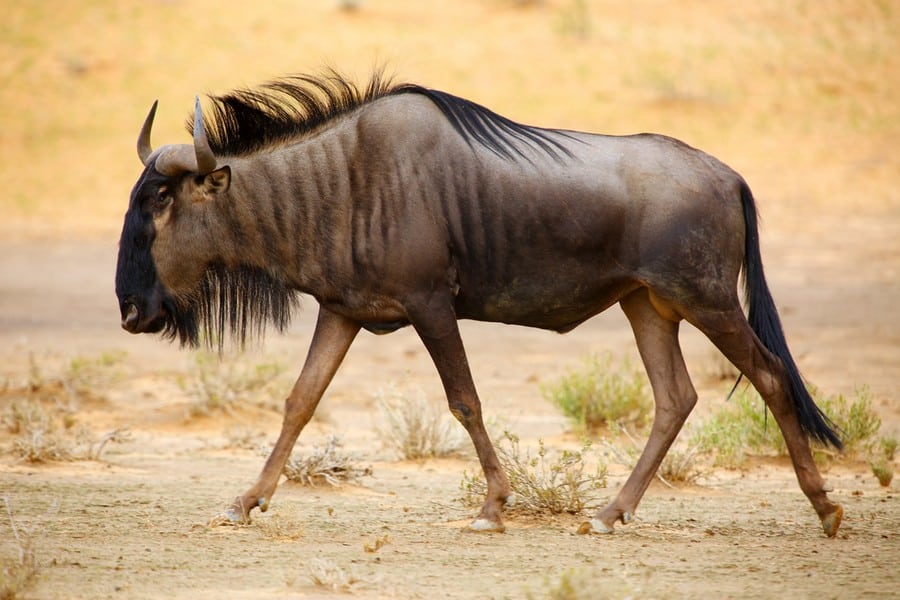
Famous for their annual migration across the Serengeti, Wildebeests, or Gnus, have curved horns. They are a crucial part of the African ecosystem, stimulating grass growth and ensuring a balanced habitat for other wildlife.
Waterbuck
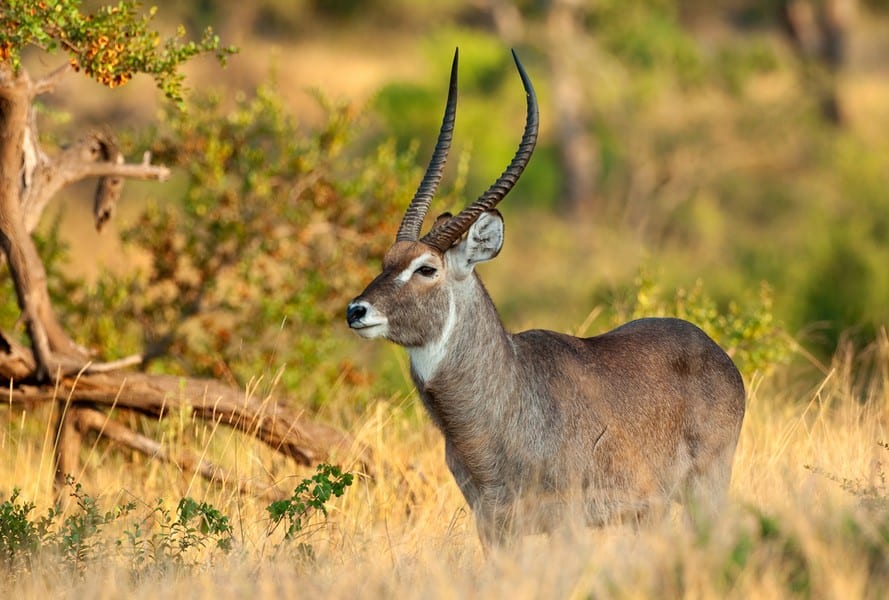
Named for their propensity to stay near water sources, Waterbucks have long, ringed horns and are known for their shaggy coat. They use water as a refuge from predators, often submerging themselves to escape threats.
Sable Antelope
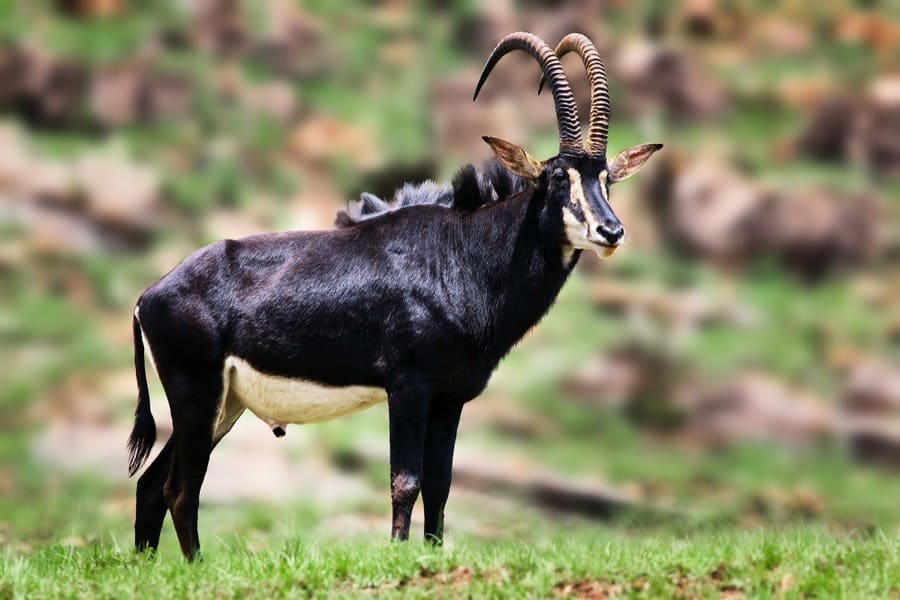
Sable Antelopes are recognizable from their deep, rich brown to black coats, with white underbellies and white markings on their faces. Known for their majestic posture and striking appearance, Sable Antelopes are a symbol of grace and strength in the African savannah.
Springbok
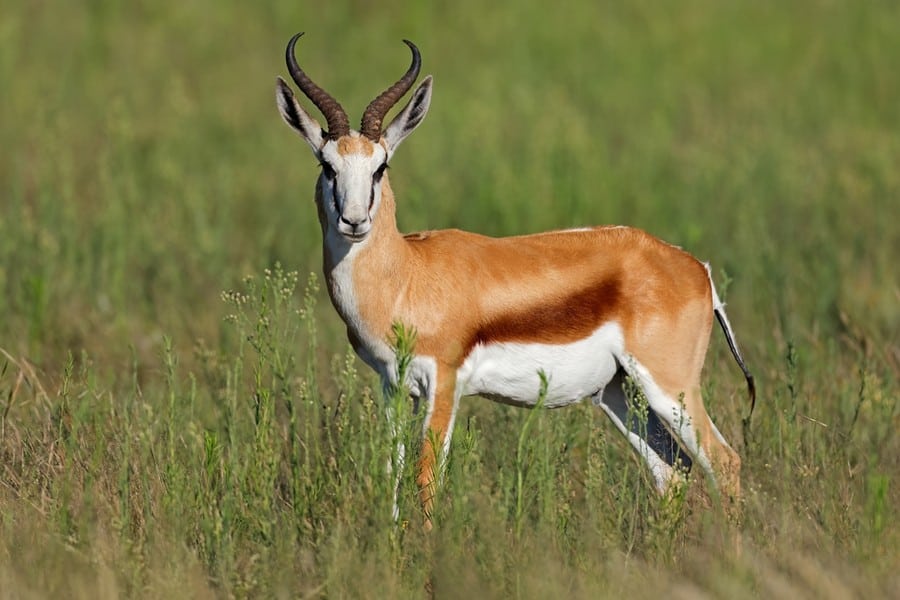
The Springbok, South Africa’s national animal, is recognized for its characteristic jumping display known as “pronking.” Their ridged, lyre-shaped horns and the extrordinary fold of skin on their backs, which can be opened to release heat, are among their noteworthy features.
Bongo
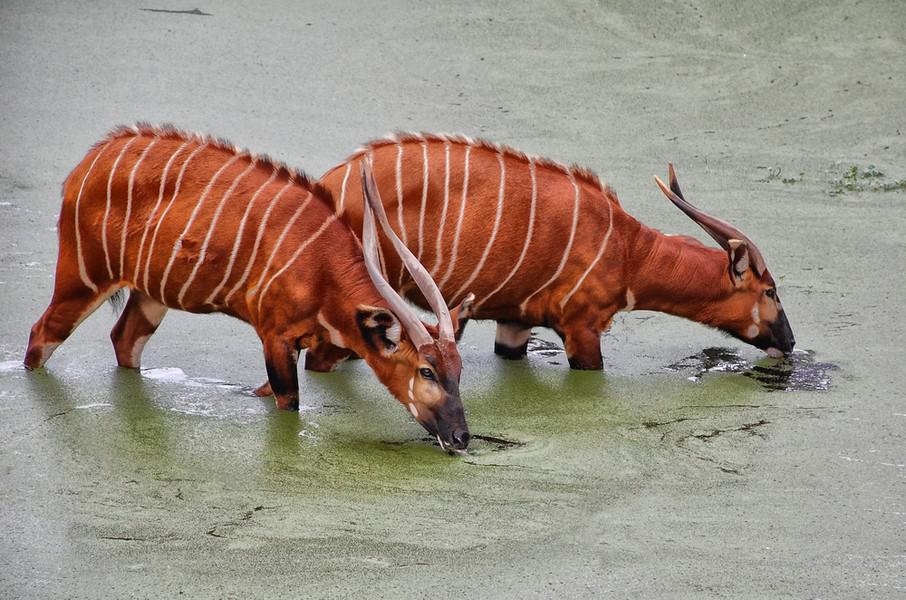
Bongos, residing in the dense forests of Africa, are among the largest of the African forest antelope species. They have spiraled horns and a white-striped coat, which provides excellent camouflage in their forest habitats.
Gazelle
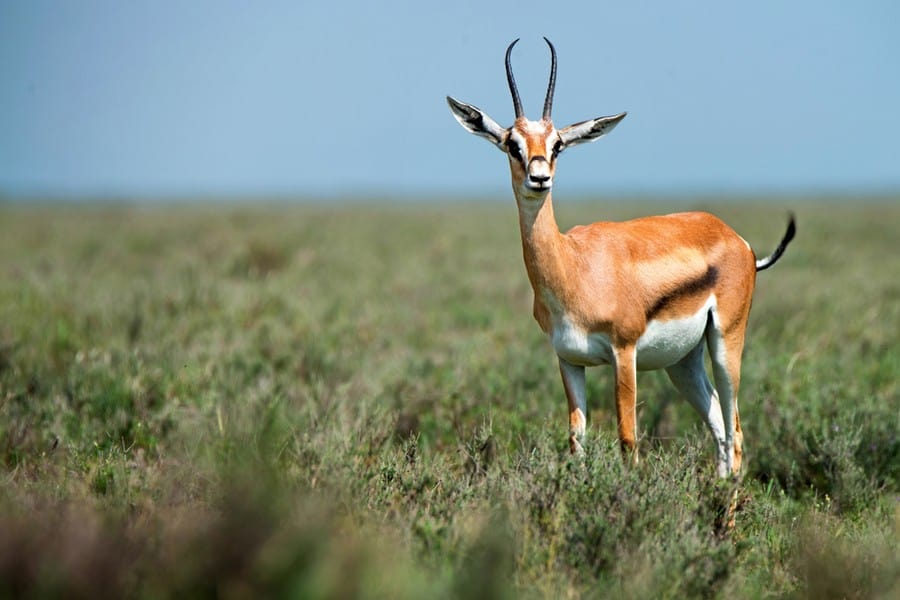
Gazelles, such as the Thomson’s and Grant’s, are epitomes of grace and agility in the African landscape. Each species has a different horn shape, used for defense and as a display during mating rituals. Gazelles are known for their speed, able to run at bursts of up to 60 miles per hour (100 km per hour).
Hartebeest
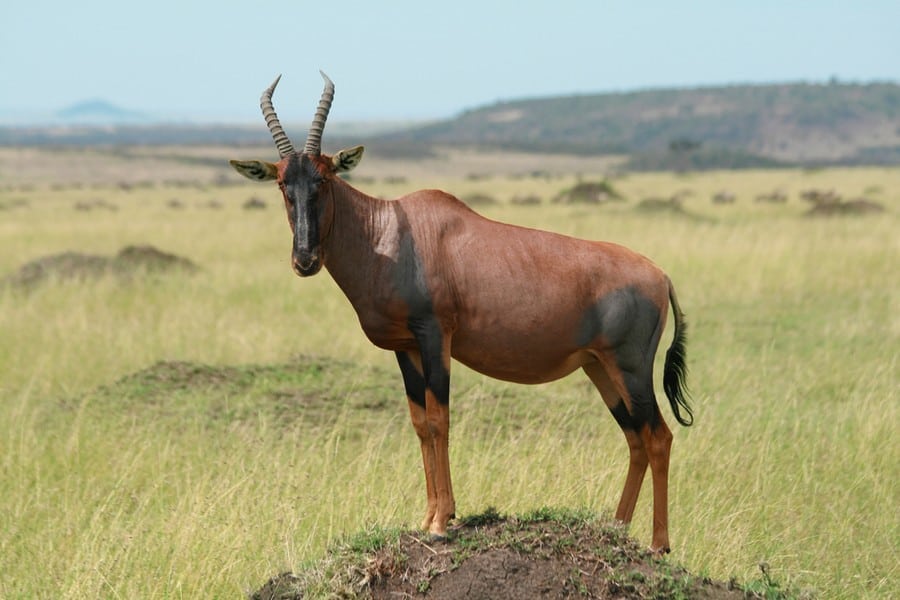
Hartebeests are easily identifiable by their characteristic long, narrow, and oddly shaped horns, which resemble the shape of a heart when viewed from the front. This discernable feature is the source of their name, as ‘hartebeest’ is an Afrikaans word meaning “deer beast.”
Roan Antelope
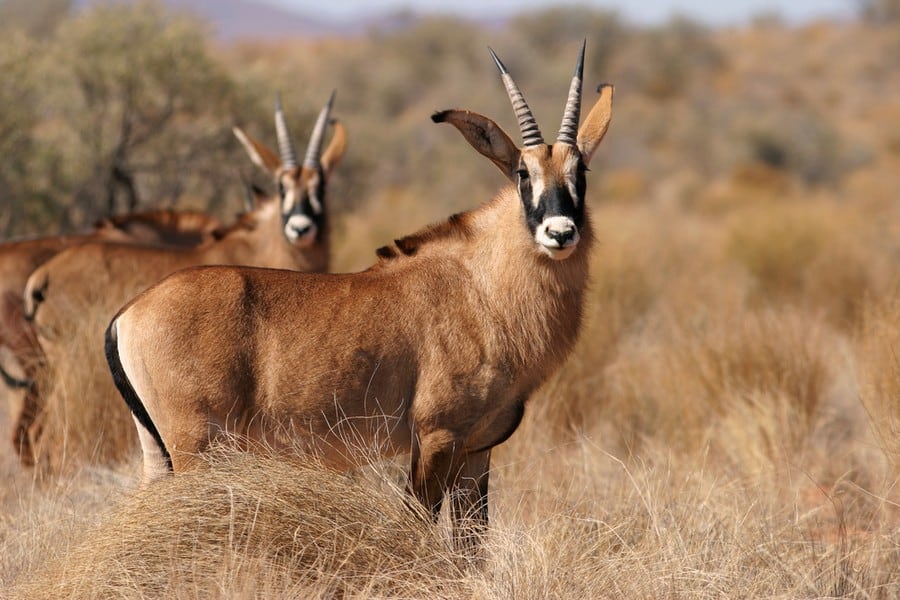
The Roan Antelope, characterized by its long and curved horns, is one of Africa’s largest antelopes. They have a face with contrasting black and white markings, including a black-and-white clown-like mask around their eyes, which is different among antelopes.
Topi
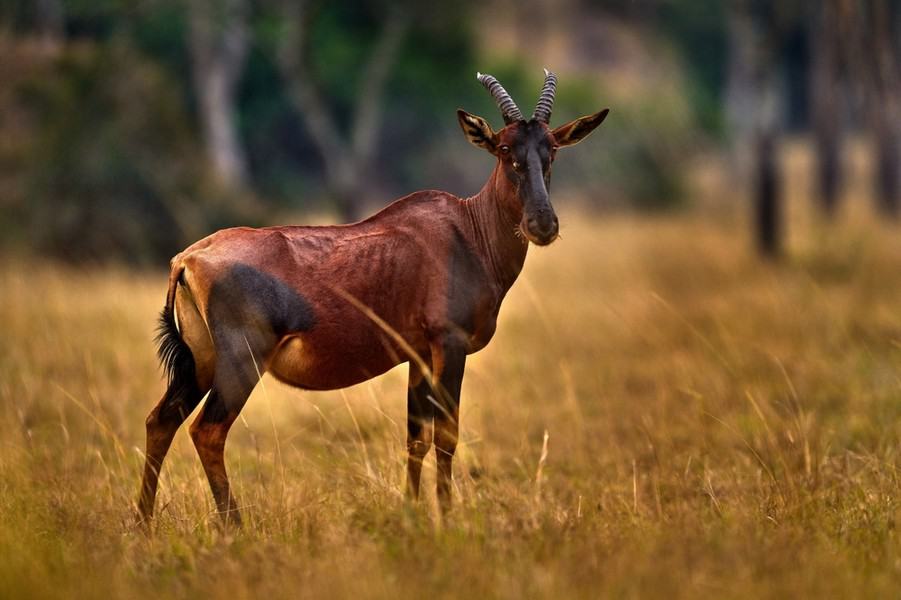
Topis, closely related to the Hartebeest, are notable for their slightly curved and ridged horns. They are known for their incredible speed and agility, often seen performing acrobatic leaps and sprints.
Jackson’s Chameleon
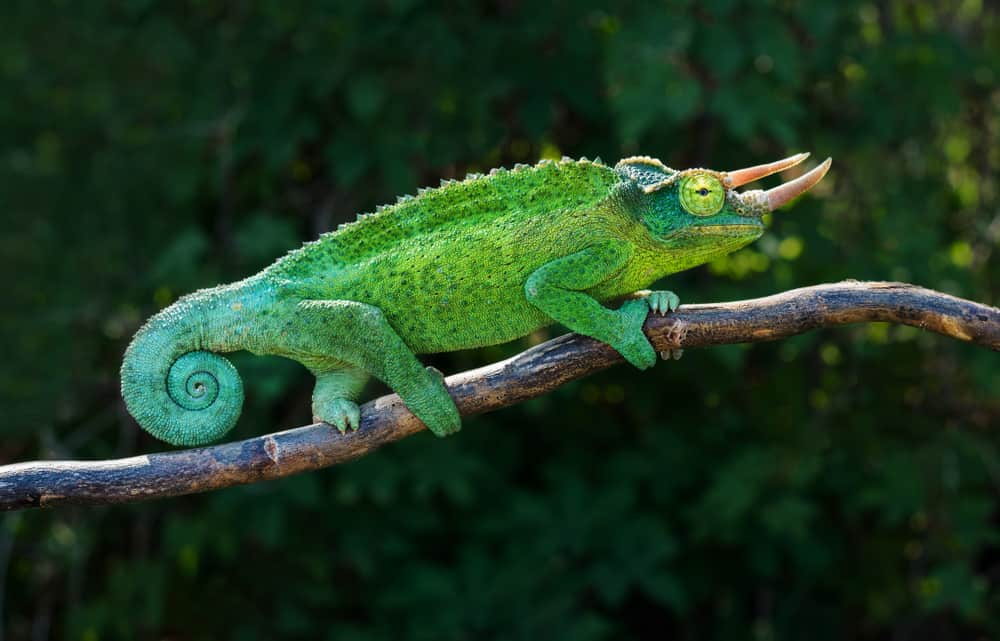
Jackson’s Chameleon is a reptile native to the forests of East Africa, particularly Kenya and Tanzania. It has three horn-like protrusions on its head, resembling those of a miniature triceratops. These horns, present in males, are used in combat with other males and for asserting dominance. The chameleon’s skin changes color based on mood, temperature, and light.
Complete List of Horned Animals of Africa
- Gemsbok: A striking member of the Oryx family, the Gemsbok is known for its long, straight horns and desert adaptability.
- Greater Kudu: Known for its magnificent spiraled horns and striped body, the Greater Kudu is a symbol of African wilderness.
- Impala: Agile and graceful, the Impala is recognized for its elegant lyre-shaped horns and impressive jumping ability.
- Springbok: South Africa’s national animal, the Springbok is famed for its pronking behavior and ridged, curved horns.
- Giraffe: The world’s tallest mammal, Giraffes possess ossified protrusions called ossicones.
- Common Eland: The largest of African antelopes, Elands are distinguished by their spiral, twisted horns.
- Blue Wildebeest: Known for its annual migration, the Blue Wildebeest has curved horns and a robust build.
- Saharan Horned Viper: A unique reptile with horn-like scales above its eyes, adapted to desert life.
- Nubian Ibex: A desert-dwelling goat with long, curved horns and a penchant for rocky terrain.
- Hartebeest: Recognizable by its heart-shaped horns, the Hartebeest is a fast and enduring antelope.
- Jackson’s Chameleon: A reptile with three horn-like protrusions, known for its striking appearance.
- Lechwe: An aquatic antelope with long, spiral horns and a preference for marshy areas.
- Dik-dik: A small antelope with short, sharp horns used for defense in the savannah and bushlands.
- Giant Eland: The world’s largest antelope, sporting massive spiral horns and a commanding presence.
- Gazelle: Epitome of elegance in the African savannah, Gazelles have distinctively shaped horns.
- Blesbok: A South African antelope with straight horns, known for its striking facial markings.
- Sable Antelope: Boasts impressive, curved horns and is renowned for its beauty and strength.
- Black Wildebeest: A gregarious animal with forward-curving horns, known for its dramatic mating displays.
- Saiga Antelope: Notable for its unusual nose structure and ringed horns.
- East African Oryx: A sturdy antelope with long, straight horns, adapted to arid environments.
- Ankole-Watusi: A breed of cattle known for its extraordinarily long, large-diameter horns.
- Bongo: A forest antelope with strikingly spiraled horns and a richly colored coat.
- Addax: A desert antelope with long, twisted horns, adapted to life in arid conditions.
- Nyala: Exhibits sexual dimorphism with males having spiral horns and a shaggy coat.
- Royal Antelope: The smallest antelope species with short, spiky horns.
- Waterbuck: Named for its habitat preference, the Waterbuck has long, ringed horns.
- Roan Antelope: One of Africa’s largest antelopes, known for its long, curved horns.
- Rhinoceros: Iconic African mammals with horns made of keratin, facing threats from poaching.
- Spiral Horned Antelope: A group of antelopes including Kudus and Bushbucks, known for their twisted horns.
- Spiral Horned Bovines: This group includes cattle breeds with spiral-shaped horns.
- Forest Buffalo: Smaller and redder than its savanna cousin, with slightly curved horns.
- Cape Buffalo: A member of the Big Five, known for its large horns forming a ‘boss’.
- West African Savanna Buffalo: Slightly smaller than the Cape Buffalo, with sweeping horns.
- Central African Buffalo: Known for its heavy build and large, downward-curving horns.
- East African Oryx: A desert antelope with straight, slender horns and a robust build.
- Scimitar-Horned Oryx: Known for its long, curved horns resembling a scimitar.
- Bushbuck: The smallest member of the spiral-horned antelope, with short, straight horns.
- Gerenuk: Known as the ‘giraffe-necked’ antelope for its long neck and small horns.
- Topi: Exhibits slightly ridged, curved horns, known for its high-speed chases.
- Bontebok: A South African antelope with glossy coat and tightly spiraled horns.
- Lesser Kudu: Smaller than the Greater Kudu, with shorter but equally twisted horns.
- Sitatunga: A swamp-dwelling antelope with long, spiral horns and water-adapted hooves.
- Roan Antelope: Has long, arching horns and a black-and-white facial mask.
- Barbary Sheep: A rugged sheep species with backward-curving horns and a mane.
- Steenbok: A small, dainty antelope with straight, pointy horns.
- Klipspringer: Lives in rocky areas, with short, sturdy horns and a remarkable jumping ability.
- Oribi: A small antelope with sharp, straight horns and a graceful build.
- Reedbuck: Prefers grasslands near water, with forward-curving horns.
- Duiker: A small forest-dwelling antelope with short, sharp horns.
- Suni: Among the smallest antelopes, with delicate horns and a shy nature.
- Tsessebe: Known for its fast speed and lyre-shaped horns.
- Puku: A medium-sized antelope with short, spiky horns, found in wet grasslands.
- Kob: Resembling the Impala, with slightly more robust build and ridged horns.
- Pygmy Goat: A domesticated breed with short, upward-curving horns.
- Somali Sheep: Known for its fat tail and curved horns.
- Grey Rhebuck: Prefers mountainous terrain, with long, straight horns.
- Beira: A small, desert-adapted antelope with short, conical horns.




















































